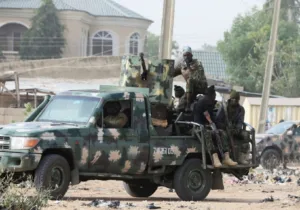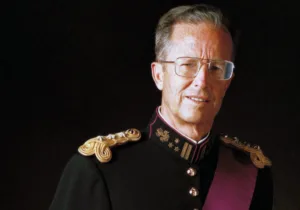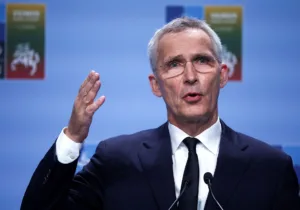Patricia Knatchbull, Countess Mountbatten of Burma, died last week and will be buried tomorrow. In 1979 the Irish Republican Army bombed her with her WWII-hero father, an admiral and last viceroy of India. Her father, teenage son, and mother-in-law, along with a local boy, were killed. The Countess, her husband, and surviving son, who lost sight in one eye, just barely survived. She was hospitalized for weeks with her husband, who had been a WWII military aide to her father. Her face and eyeballs were stitched back together, leaving lifelong scars. Consumed by grief for her dead son, she felt guilt for insufficient grief over her beloved father. She and her husband, bandaged and in wheel chairs, left the hospital briefly to attend the wedding of another child. They had been unable to attend their son’s funeral.
The Countess, who was 93, channeled her grief productively into work with other parents who had lost children, among other charities, during a life that was extraordinary and glamorous. Her father was uncle to Prince Philip, whose marriage to Queen Elizabeth he orchestrated. Her mother, who was remote to her daughters, was a sophisticated and alluring heiress who allegedly had an affair with Indian leader Jawaharlal Nehru. Early in WWII the Countess was sent to live safely with the Vanderbilts in New York until she came of age to return home and contribute to the war effort. After the war her wedding to a peer of the realm who became a successful film producer was attended by virtually the whole royal family. Her bridesmaids included the future Queen, for whom she remained a lifelong confidant.
Of course the murders of 1979 remained central to her life. The family was visiting their Irish home and felt safe with security despite that decade’s frequent terror by the IRA, which remotely detonated a bomb on the family fishing boat after carefully watching from a distance as old people and children boarded. Prime Minister Thatcher eulogized Lord Mountbatten, who had been one of WWII’s last surviving senior commanders. Britain intensified its war against the IRA, which championed Irish nationalism against Northern Ireland’s pro-United Kingdom Protestant majority. Although theoretically pro-Catholic, the IRA was largely secular and collaborated with a web of leftist terror groups like West Germany’s Bader-Meinhoff gang and Italy’s Red Brigades, with help from Libya’s Muamar Kaddafi, the PLO and Soviet intelligence.
After decades of terror and after the Cold War ended, the IRA and British government in the 1990s entered into negotiations that concluded with the 2006 St. Andrews Agreement, in which the IRA’s political arm Sinn Féin essentially shared power in Northern Ireland with the Protestant Unionists led by anti-Catholic firebrand Ian Paisley. Last week in Washington, DC, I attended a film at the U.S. Institute of Peace about the St. Andrews Agreement hosted by the Northern Ireland Bureau, which is Belfast’s representative to the U.S.
Called The Journey, the film is a fictionalized account of the personal reconciliation between Paisley and Sinn Féin official Martin McGuinness, who became deputy minister under Paisley in Northern Ireland. Formerly arch enemies, their grudging political collaboration for peace resulted in a sort of friendship, for which they were called the Chuckle Brothers. The film, which features characters portraying Paisley, McGuinness, and Prime Minister Blair, has been criticized for its unabashed liberty with historical fact. But its larger dramatization of personal and political reconciliation in Northern Ireland is truthful and moving.
Despite her tremendous personal loss from IRA terror, Countess Mountbatten supported the peace process. (The only man convicted for her father’s and son’s murders was released in 1998 as part of the peace process.) She referred to the facial scars left by 120 stitches as “my IRA face-lift.” But when Queen Elizabeth in 2012 shook hands with McGuinness, about which the Queen had consulted her friend the Countess, the survivor of IRA terror was supportive: “She was absolutely right to do that. I very much approve of anything that will bring about peace.”
The Countess once expressed doubt she would ever see her slain son again. Let’s hope she has. Her funeral tomorrow is at St Paul’s Church, Knightsbridge, London.







 Sponsor a student for Christianity & National Security 2024
Sponsor a student for Christianity & National Security 2024